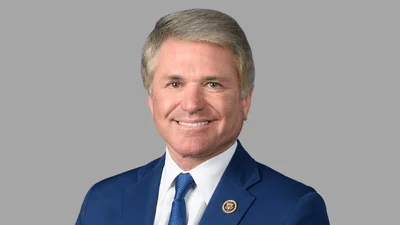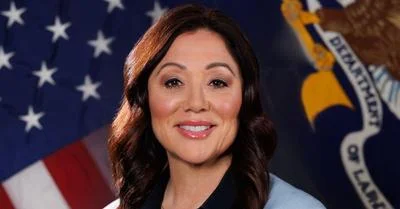Thank you for holding this important event today. Fraud, waste and abuse are rampant in the Medicare program. There are many reasons why the Medicare program is a favorite target for bad actors. The Medicare program is vast, complex and riddled with opportunities for unscrupulous individuals looking for an angle. It is this same reason that accounts for the fact that there is no one silver bullet that will fix the program and insure that taxpayer dollars are spent for the purpose for which they were intended, that is to provide high quality medical care to, among others, those over 65.
Because of the size of the Medicare program, which is about $450 billion dollars annually,
estimates are that approximately $60 billion of that is lost to Medicare fraud, waste and abuse.
It’salso for this reason, that the Medicare program earned a spot on the GAO's high risk list. A look at recent newspaper articles reminds us all how serious this problem is and how creative people and corporations can be in bilking the Medicare program. You have one company that just recently agreed to repay $60 million following allegations of fraudulently billing Medicare for renal dialysis claims and fraudulent cost reporting. You have the Medicare Fraud Strike Force that charged 142 defendants for fraudulently billing the Medicare system $492 million.
Then there's the Miami woman who bilked the federal government out of $105 million in her home-run one-woman Medicare fraud operation by submitting fraudulent bills for HIV infusion services. And last but not least there are the 14 dead Chicago doctors who somehow continued to bill Medicare; their ID numbers were being used by crooks.
Among the most lucrative forms of Medicare fraud concerns durable medical equipment,
or DME. DME includes products such as prosthetics, power wheelchairs, nebulizers and other equipment. CRS reports that between April 2006 and March 2007, Medicare paid $9.9 billion for durable medical equipment. Of this, improper payments are estimated to be $1 billion -
annually. Now, fraud, waste and abuse is not rampant in the Medicare program because we don't care or because we are in favor of fraud. In fact we have many tools that we use daily to fight the ground war against fraud, waste and abuse in the Medicare program. One of the best tools available to us is the False Claims Act.
The False Claims Act is the Government's preeminent tool for recovering money or property lost to fraud or abuse in Government programs, including both Medicare and Medicaid.
It makes everyone a kind of prosecutor, and it's proven itself to be an effective tool in the war against fraud, waste and abuse in the Medicare program. Since 1986, the False Claims Act has led to the recovery of well over $20 billion.
Another tool for combating Medicare fraud are Recovery Audit Contractors, or RACs. In
2003 Congress authorized the Secretary of Health and Human Services to contract with RACs.
In the past three years, the Medicare Recovery Audit Contractor Program has investigated instances of CMS payment errors and has been able to return slightly under $700 million to the trust fund. The Tax Relief and Health Care Act of 2006, made RACs a permanent part of the Medicare program. In addition we increased the funding to the Health Care Fraud and Abuse Control Account by $198 million and that money has yielded a good number of successful prosecutions against those abusing the Medicare program.
The Health Care Fraud Abuse Control Program, or HCFAC, is another important tool for fighting Medicare fraud. Under the joint control of the Attorney General and Secretary of Health and Human Services, the HCFAC program coordinates federal, state and local law enforcement activities in combating health care fraud. As of November of 2007, the program has returned over $10.4 billion to the Medicare Trust Fund.
Now one tool that we did not add to the tool box this year is competitive bidding program for durable medical equipment. The reason that this happened is because serious flaws surfaced during the first round of competitive bidding that was conducted by CMS. Small home medical equipment suppliers were in danger of going out of business, which would have serious unintended consequences to makers of essential medical equipment. There were also process concerns, including rules being changed at the last minute and frivolous rejections of bids by CMS, and a serious lack of notification to bidders. We identified these problems and acted to correct them from the start. After all, problems are either corrected or compounded.
So fraud, waste, and abuse are problems that span across the entire Medicare system and cost $60 billion every year. As bad actors continue to find innovative ways to bilk the Medicare program, it becomes vitally important to provide the American taxpayer with the protections that they deserve, so that the Medicare system is protected and Medicare funds help beneficiaries as intended.
I'll continue to exercise my oversight responsibilities on behalf of the millions of Medicare beneficiaries to ensure that Medicare funds are properly and responsibly spent and look for opportunities to detect and deter fraud, waste and abuse.









